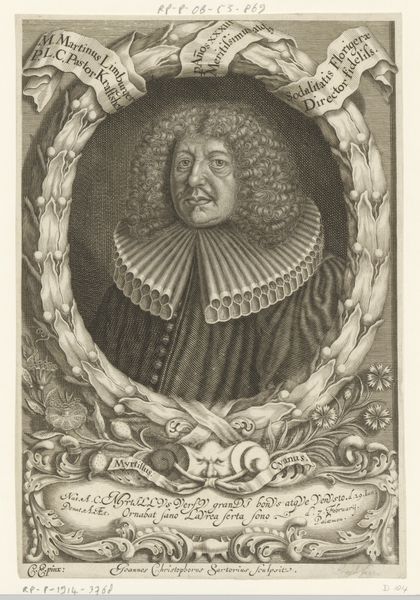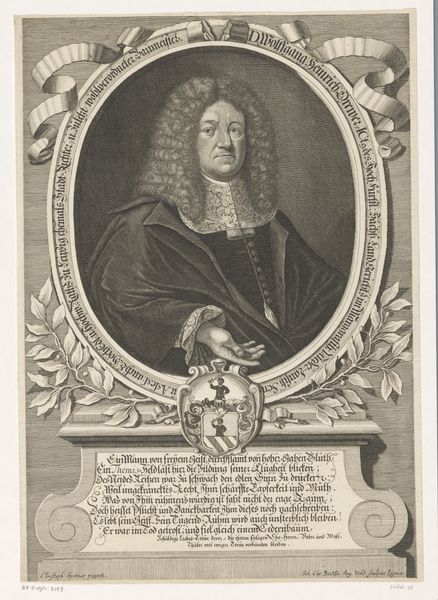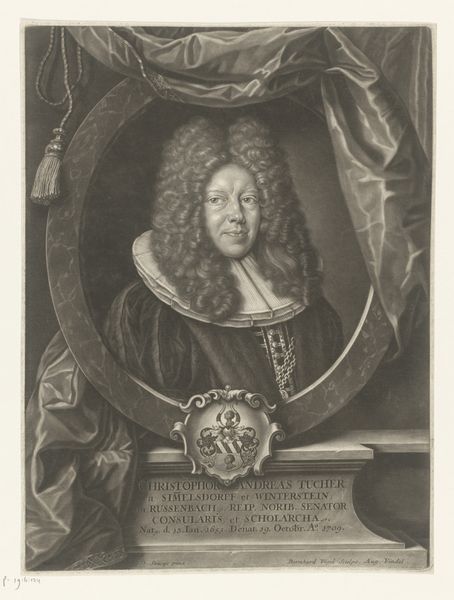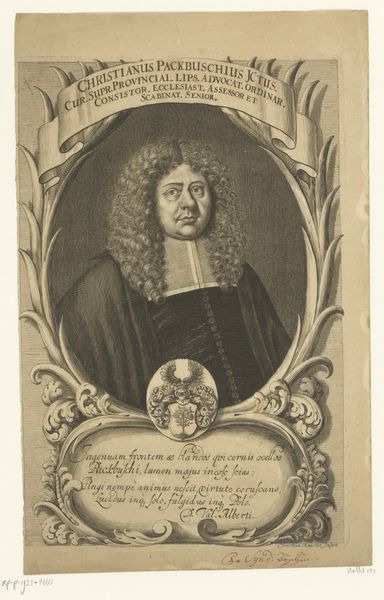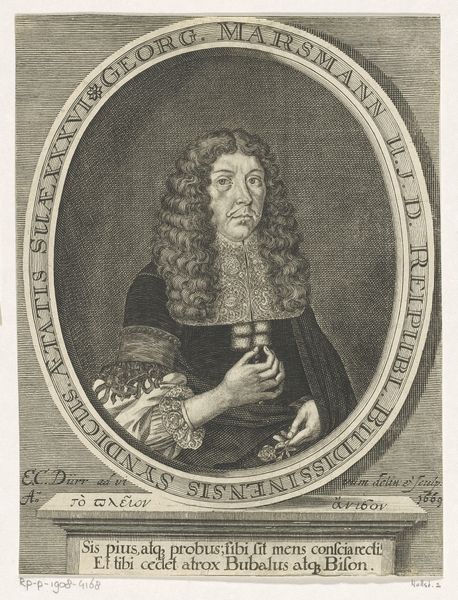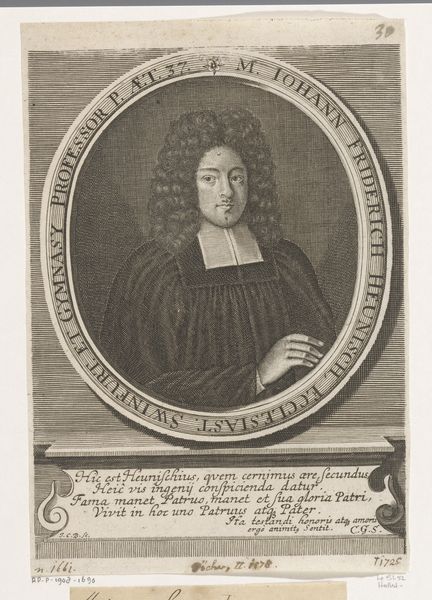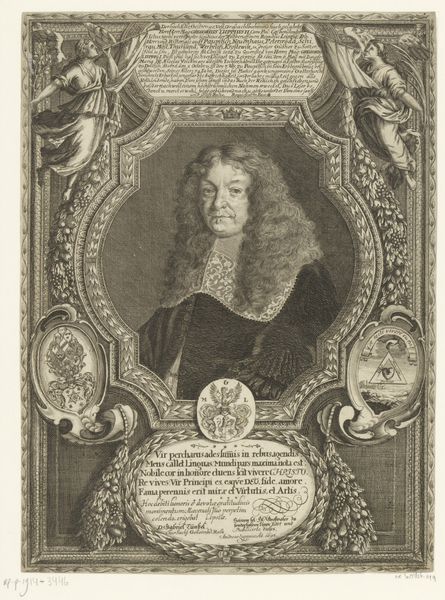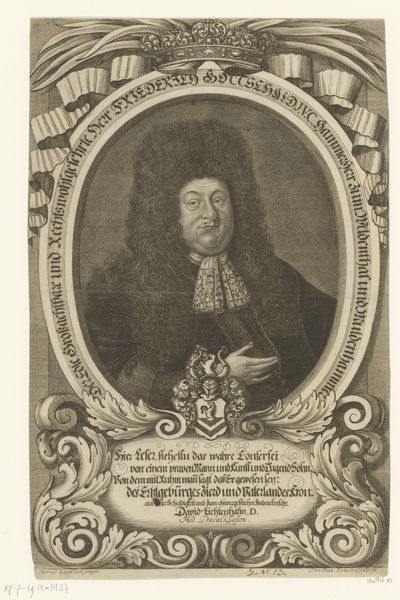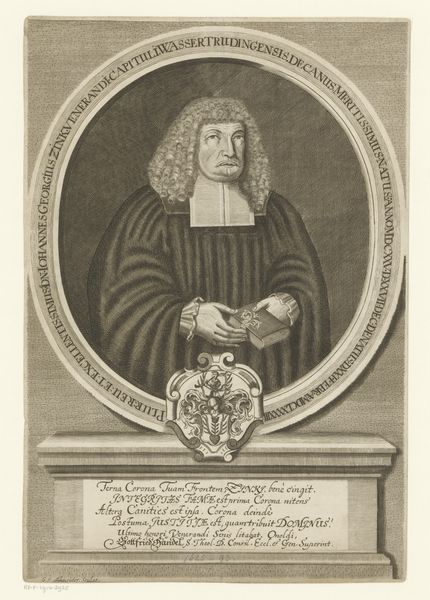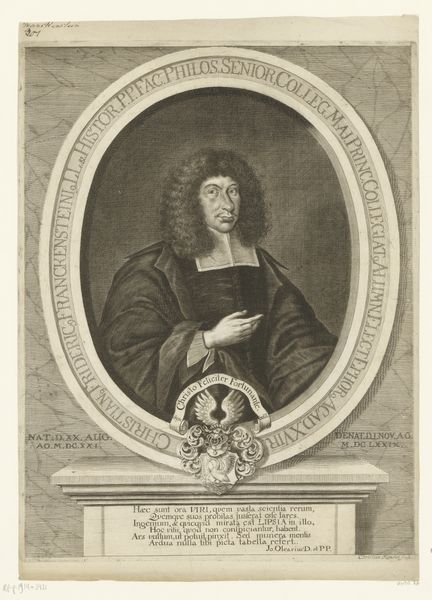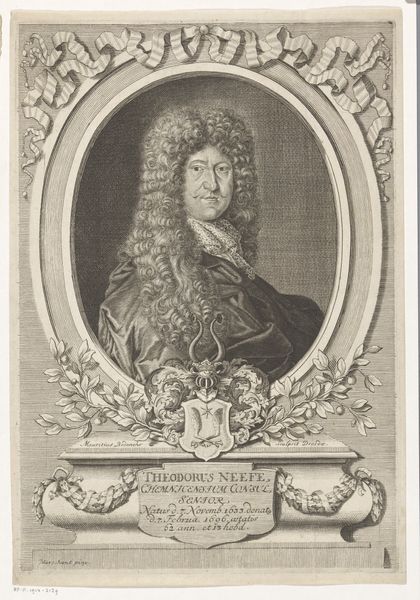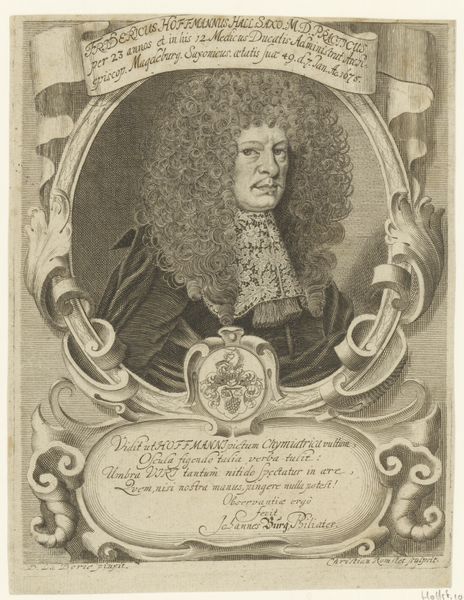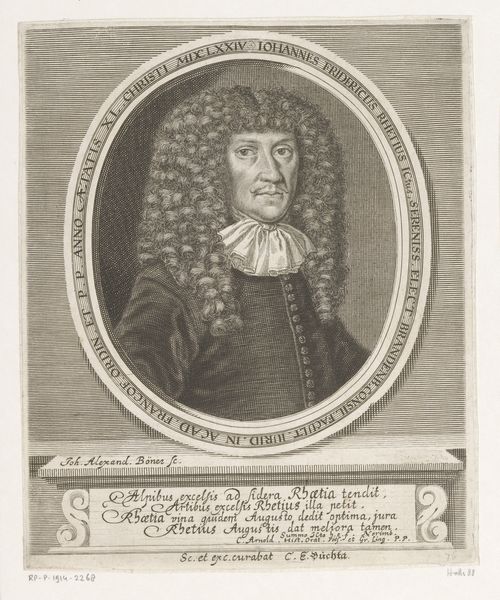
print, engraving
#
portrait
#
baroque
# print
#
old engraving style
#
history-painting
#
engraving
Dimensions: height 239 mm, width 174 mm
Copyright: Rijks Museum: Open Domain
Curator: Before us is a portrait identified as "Portret van Johann Christoph Jäger," crafted between 1665 and 1721 by Christian Romstet, executed in engraving. Editor: The somberness in this print strikes me immediately; the stark contrasts seem to emphasize both the weight of his status and perhaps, a personal melancholy? Curator: Yes, and situating this work, portraits like these during the Baroque era weren't merely representations. They were powerful articulations of identity and authority. Jäger, identified within the inscription as holding significant Electoral Provincial positions, uses the portrait as a declaration. Consider the labor behind an engraving—every line meticulously etched, reproduced, disseminated, all to construct and reinforce this public persona. Editor: And that lace collar— the sheer labor involved in creating something so intricate. It speaks volumes about the means of production during this era and about Jäger's elevated class position as distinct from the labouring classes. Beyond adornment, these objects materially represented social stratification. Curator: Precisely. Furthermore, examining this piece through an intersectional lens highlights the restricted access to power and representation in the 17th century. We see a very specific kind of male authority celebrated and propagated through such media. It really speaks to the exclusionary power structures of the period. Editor: But the portrait also signifies something broader: how printmaking as a mode democratized images and knowledge during the Baroque. Its dissemination impacted Jäger's sphere of influence, as print made these authoritative visages visible across territories beyond just his immediate physical location. It's not simply about individual authority, but the technology that helped to perpetuate certain hierarchies. Curator: That's an interesting nuance; although portraits, more specifically engravings like this one, tend to give rise to conversation and reflection. I find myself always circling back to thinking about representation and whose image is being centered. It's critical to explore how history has predominantly been narrated, which includes reflecting on gendered, racial, and socio-economic dimensions. Editor: For me, it is striking how materials reveal the labor and production practices of the era, which shape these artistic expressions. Curator: Indeed, a valuable consideration to always have in mind.
Comments
No comments
Be the first to comment and join the conversation on the ultimate creative platform.
